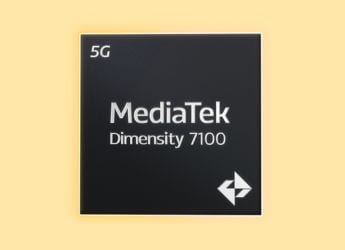- Home
- Science
- Science News
- NASA Hubble Space Telescope Shares Image of a Planet Growing
NASA Hubble Space Telescope Shares Image of a Planet Growing
The image shows a giant planet outside the Solar System feeding off material surrounding a young star.

Photo Credit: Instagram/ @nasahubble
The image shows a red, hot planet emanating electrical sparks, the other ends connected to halo rings
NASA Hubble Space Telescope is giving astronomers a rare look at a Jupiter-sized, still-forming planet. NASA shared an image of the exoplanet — a planet outside the Solar System — on the official social media pages of Hubble telescope. Called PDS 70b, the exoplanet can be seen feeding off material surrounding a young star. The American space agency said in the social media posts that it has taken this extrasolar five million years — “a pretty young age for a planet” — to grow to its current size.
The image shows a red, hot planet emanating electrical sparks, the other ends of which are connected to halo rings surrounding it as if the planet was using them as a tube to suck from the outside. “These Hubble observations help give us insight into how gas giant planets formed around our Sun 4.6 billion years ago,” NASA added in the post.
NASA explained that PDS 70b shows how it was building up mass from the material falling onto its giant world. The system – the exoplanet and the young start it is feeding off – is located 370 light-years from Earth in the constellation Centaurus. In a blog post, NASA said that these observations would offer insights into how giant planets formed around the Sun 4.6 billion years ago. Jupiter may have bulked up on a surrounding disk of infalling material. Its major moons would have also formed from leftovers in that disk, NASA stated in the blogpost.
NASA said more than 4,000 exoplanets have been documented until now but only about 15 have been directly imaged by telescopes. These planets are so far away and small that they simply appear like dots in the best photos. However, scientists say that are hopeful the Hubble's new technique could open a completely new area of research.
“This planetary system gives us the first opportunity to witness material falling onto a planet. Our results open up a new area for this research,” Brendan Bowler of the University of Texas at Austin was quoted as saying in a NASA report.
The Hubble is a joint project between NASA and European Space Agency (ESA).
Catch the latest from the Consumer Electronics Show on Gadgets 360, at our CES 2026 hub.
Related Stories
- Samsung Galaxy Unpacked 2025
- ChatGPT
- Redmi Note 14 Pro+
- iPhone 16
- Apple Vision Pro
- Oneplus 12
- OnePlus Nord CE 3 Lite 5G
- iPhone 13
- Xiaomi 14 Pro
- Oppo Find N3
- Tecno Spark Go (2023)
- Realme V30
- Best Phones Under 25000
- Samsung Galaxy S24 Series
- Cryptocurrency
- iQoo 12
- Samsung Galaxy S24 Ultra
- Giottus
- Samsung Galaxy Z Flip 5
- Apple 'Scary Fast'
- Housefull 5
- GoPro Hero 12 Black Review
- Invincible Season 2
- JioGlass
- HD Ready TV
- Laptop Under 50000
- Smartwatch Under 10000
- Latest Mobile Phones
- Compare Phones
- OPPO Reno 15 Pro Max
- Honor Win RT
- Honor Win
- Xiaomi 17 Ultra Leica Edition
- Xiaomi 17 Ultra
- Huawei Nova 15
- Huawei Nova 15 Pro
- Huawei Nova 15 Ultra
- Asus ProArt P16
- MacBook Pro 14-inch (M5, 2025)
- OPPO Pad Air 5
- Huawei MatePad 11.5 (2026)
- Xiaomi Watch 5
- Huawei Watch 10th Anniversary Edition
- Acerpure Nitro Z Series 100-inch QLED TV
- Samsung 43 Inch LED Ultra HD (4K) Smart TV (UA43UE81AFULXL)
- Asus ROG Ally
- Nintendo Switch Lite
- Haier 1.6 Ton 5 Star Inverter Split AC (HSU19G-MZAID5BN-INV)
- Haier 1.6 Ton 5 Star Inverter Split AC (HSU19G-MZAIM5BN-INV)

















